Cork bark is perhaps the most versatile terrarium material you can buy.
With a unique combination of structural and bioactive qualities, cork bark can perform a wide variety of functions (and look good doing it).
Sturdy yet spongy, waterproof, and mold-resistant – what more could you want?
It’s used in everything from terrarium backgrounds to
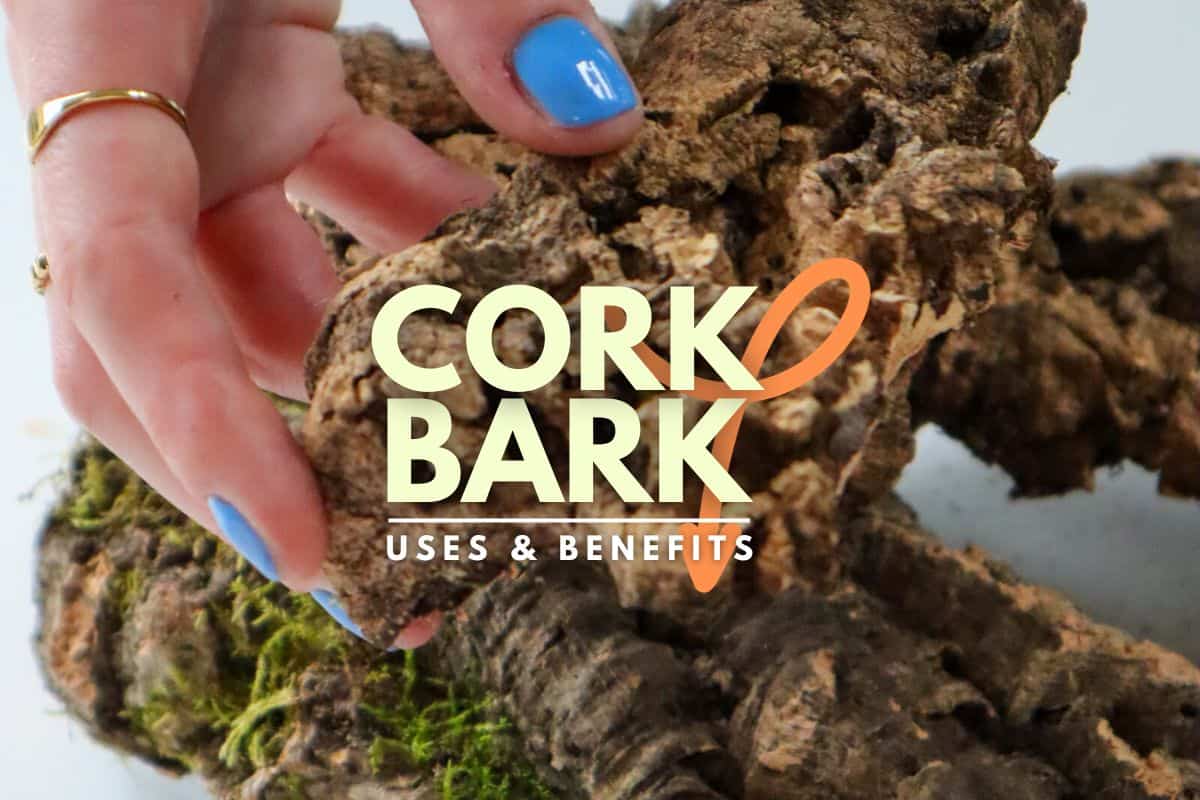
Terrarium Tribe is reader-supported. When you purchase through links on our site, we may earn an affiliate commission (at no further cost to you). 💜
What is Cork Bark? (+ Benefits)
Cork bark comes from the outer layer of the Cork Oak Tree (Quercus suber).
You’ll find these trees all over the Mediterranean, but the material is most often sourced from Portugal. And much like the fine wines from the region, this remarkable material can be sustainably harvested from live trees in a process delightfully called “uncorking.”
So it’s eco-friendly!
Though it’s technically a bark and not a wood (the clue is in the name), it tends to be labeled a softwood. So you’ll still find it in the hardscape/wood section.
Naturally, as the outside coating of a tree, it’s designed to be water-resistant and hardy. But thanks to some unique structural properties, it can do far more than simply resist the elements.
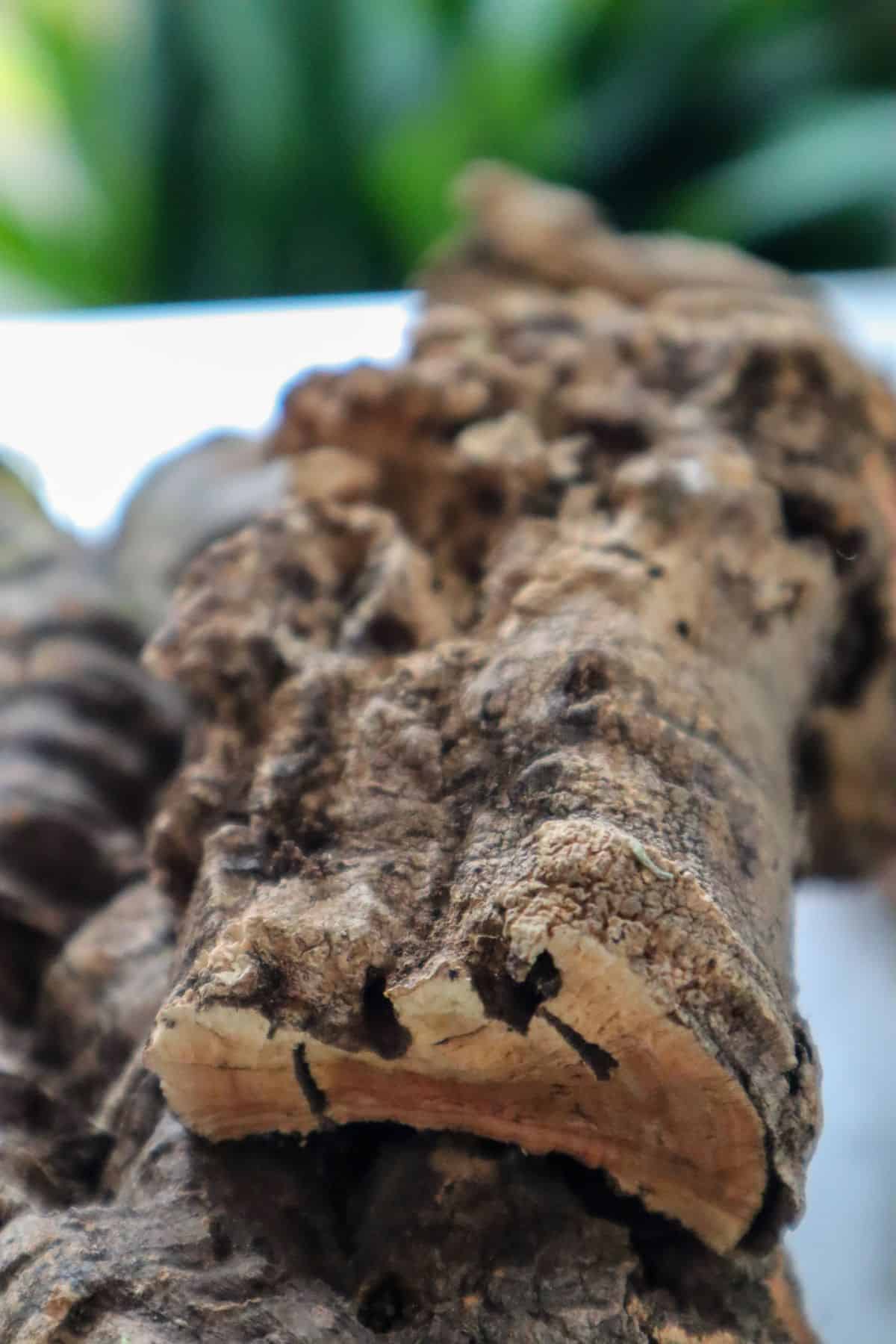
- Lightweight – Cork’s honeycomb cellular structure keeps it surprisingly light and durable.
- Water-resistant – A hydrophobic membrane of a substance called “Subarin” is thought to be the source of cork bark’s incredible impermeability.
- Rot and mold resistant – Being impermeable to liquid has a handy side-effect of basically preventing rotting. You can’t break down what you can’t get into!
- Elastic – The low-density structure holds air pockets that can compress and bounce back.
For these reasons, cork bark is used in many commercial and hobbyist applications – and we’re about to dive into all the terrarium-focused ones.
Uses of Natural Cork Bark in Terrariums
Hardscape
Cork bark is one of the most natural-looking terrarium materials.
No other material can match its distinctive style. Plus, there’s a wide degree of natural variation that keeps things interesting – no two pieces are ever the same!
As for applications:
- Cork bark’s lightweight structure makes it a good material for DIY terrarium backgrounds and ledges. You can glue them in place against the back panel (or fill them in with foam), and it’s not going to add significant weight.
- The rough surface and uneven texture make mounting epiphytes easy, so it’s a versatile terrarium decor option. Mounting orchids around the background is a great way to add a pop of color; vining plants can look great cascading down the back.
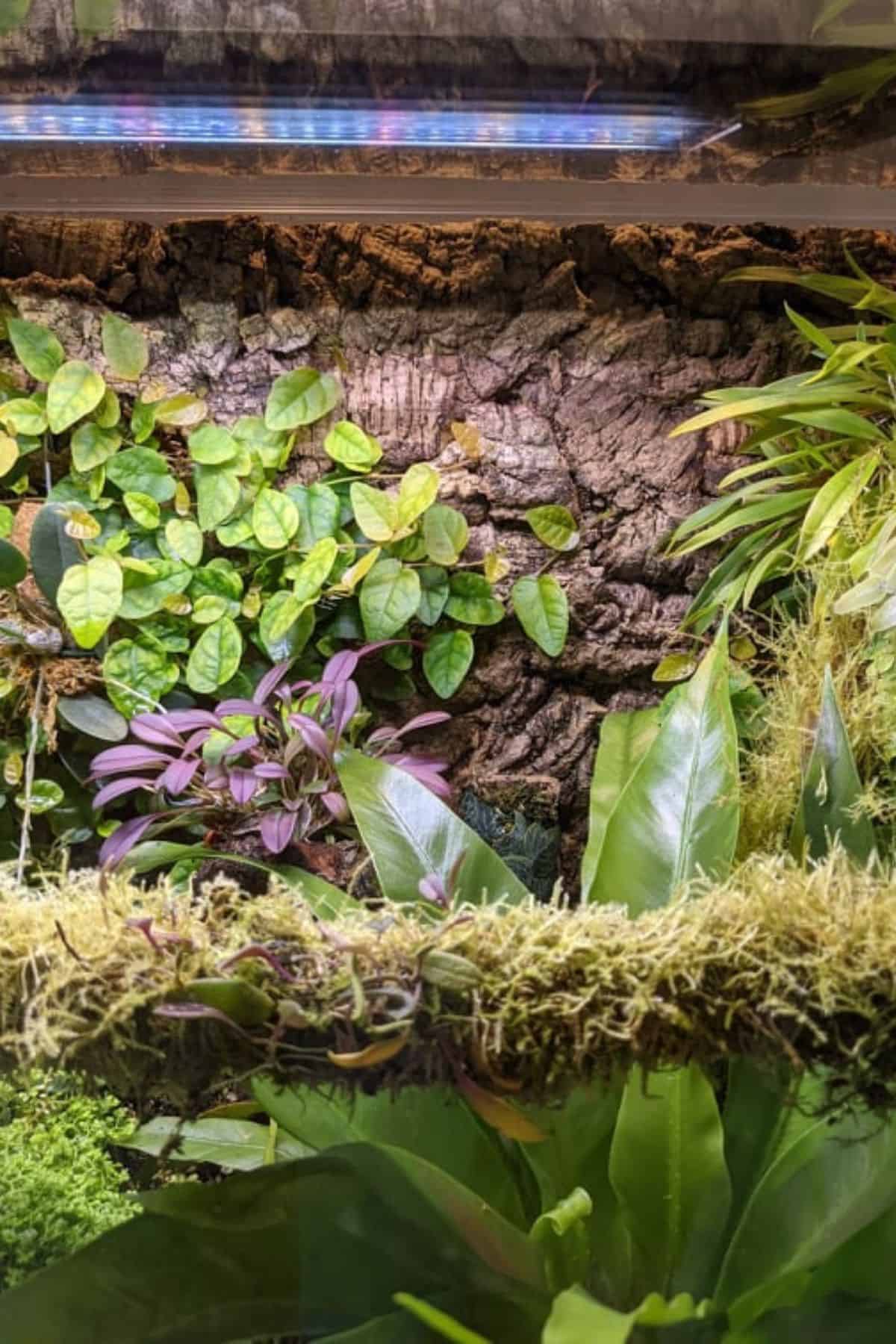
- Its water-resistant nature means you can also use it as a barrier to separate wet and dry elements in a tank. I wouldn’t personally use it in this way for super-critical areas (e.g., in a paludarium), but I can see it working if you’re grouping plants with different moisture requirements.
Cork Bark for Reptiles (and Other Animals)
Cork bark is seemingly universally loved by people and animals alike.
Whatever critters you like to keep, there’s probably a use for cork bark in their enclosure.
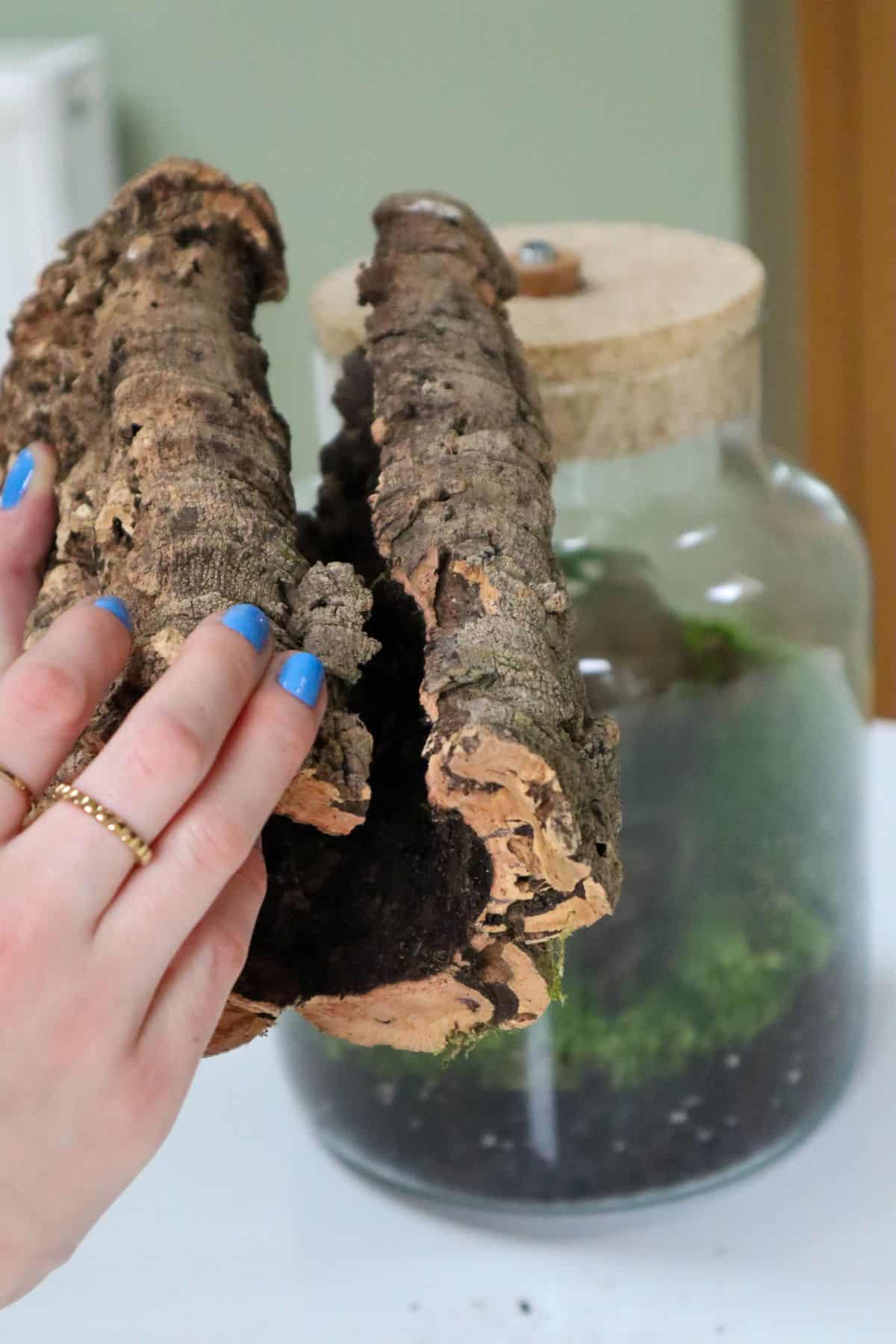
Simply popping in one of the half-tubes of bark is an easy starting point.
They make lovely little pet hides or basking spots. Or if you choose to build up your hardscape with cork bark, it’s a great climbing material for arboreal species.
Alternatively, it floats well too.
There’s also its ability to float. Cork bark is super buoyant thanks to its cellular air pockets, so you can add it to water features as a floating perch (turtles are sure to love it).
Isopod Cultures
The mold-resistant nature of cork bark makes it an excellent fit for
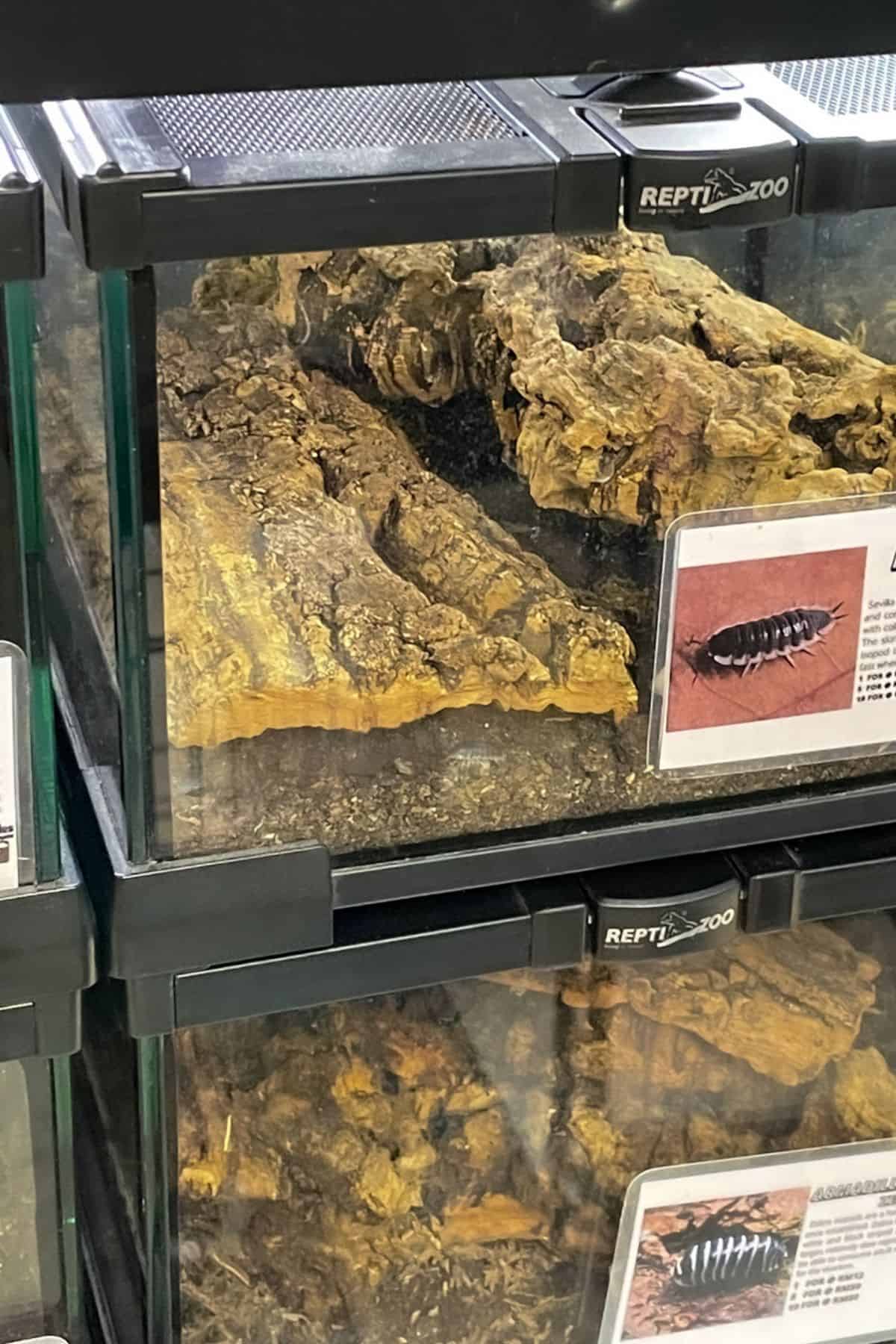
You can maximize the humidity without risking a massive fuzzy overload.
Plus, isopods love to use it as a hiding spot. So, if you have a big chunk of cork bark in your
They will consume it but at a very slow rate. So you won’t have to replace it for a very long time.
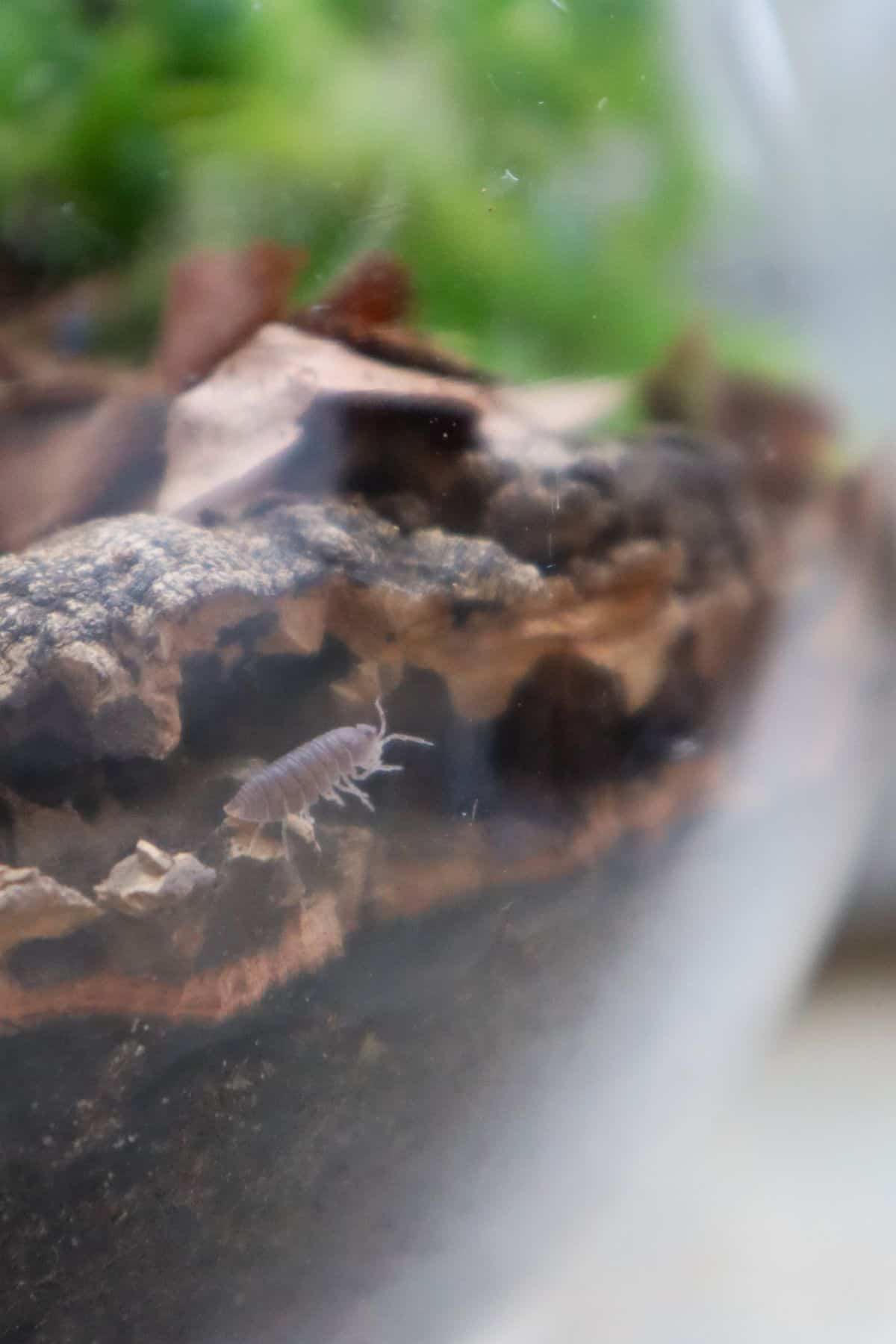
Types of Cork Bark (and Their Applications)
When we’re talking about natural cork bark for terrariums, we’re primarily talking about “virgin cork bark.”
The term is reserved for materials from the first harvest of a tree.
Virgin cork bark tends to be much thicker and more visually dynamic, so it’s best for naturalistic applications. Later harvests will be used for your more commercial applications (e.g., corks and bags).
That said, virgin cork bark still comes in a variety of forms.
- Cork bark flats are pressed sheets that are often the material of choice for terrarium backgrounds.
- Cork bark rounds are tubes (or half tubes) that are perfect for animal hides.
- Cork bark chunks are smaller pieces of cork bark that can be used for a range of things. Great for small
isopod cultures or mounting smaller epiphytic plants.
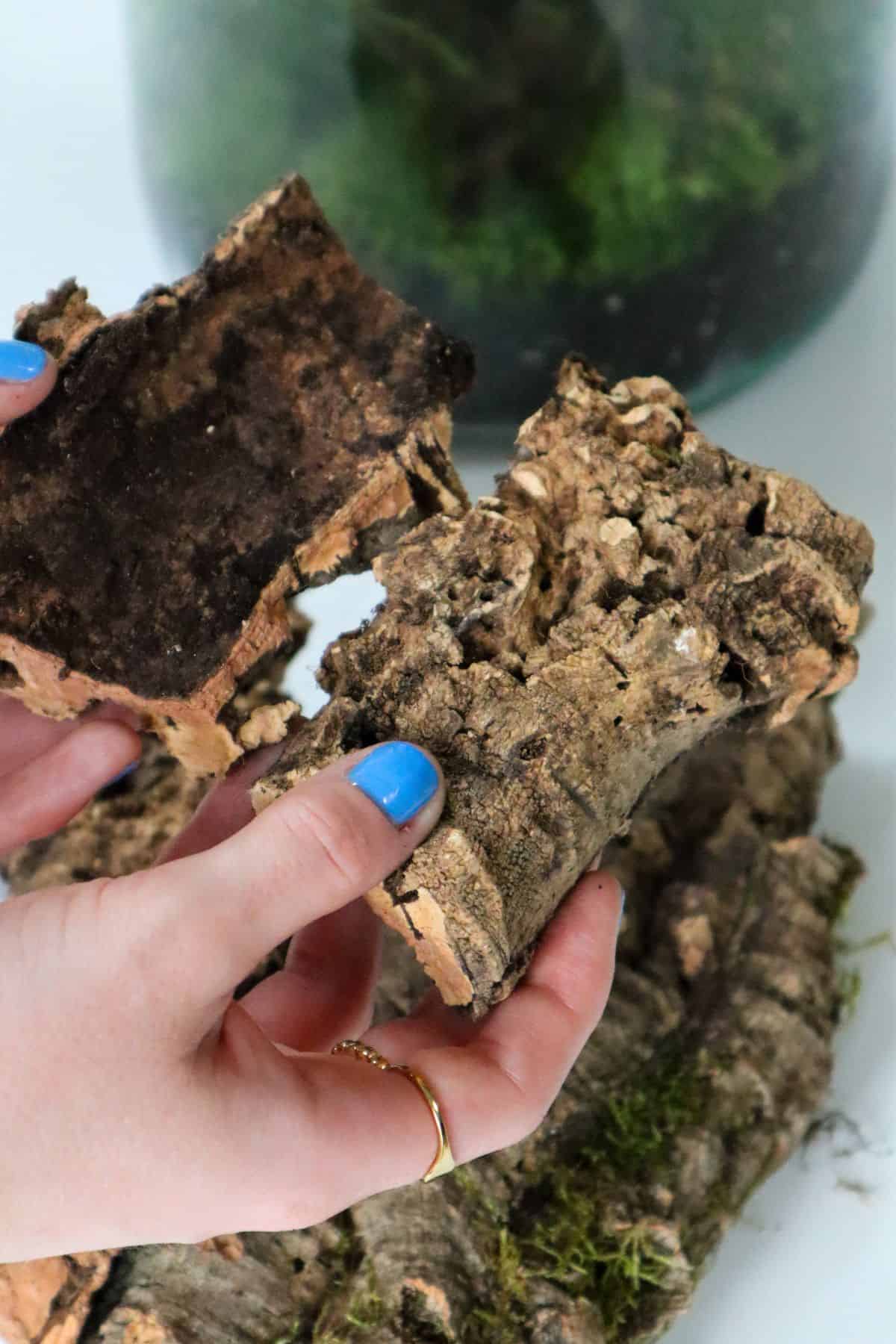
Where to Find Cork Bark for Sale
You can find natural cork bark from various online suppliers these days.
Though the natural variation in cork bark means you never know exactly what you’re getting till it arrives.
So, if you need something specific, it can be helpful to go with one of the established brands in the reptile space that offer reliable (but typically more expensive) options. Or you can go straight to cork bark sellers for a better deal.
- Shop on Etsy from a range of sellers. It’s one of the best (and cheapest) ways to source this amazing material.
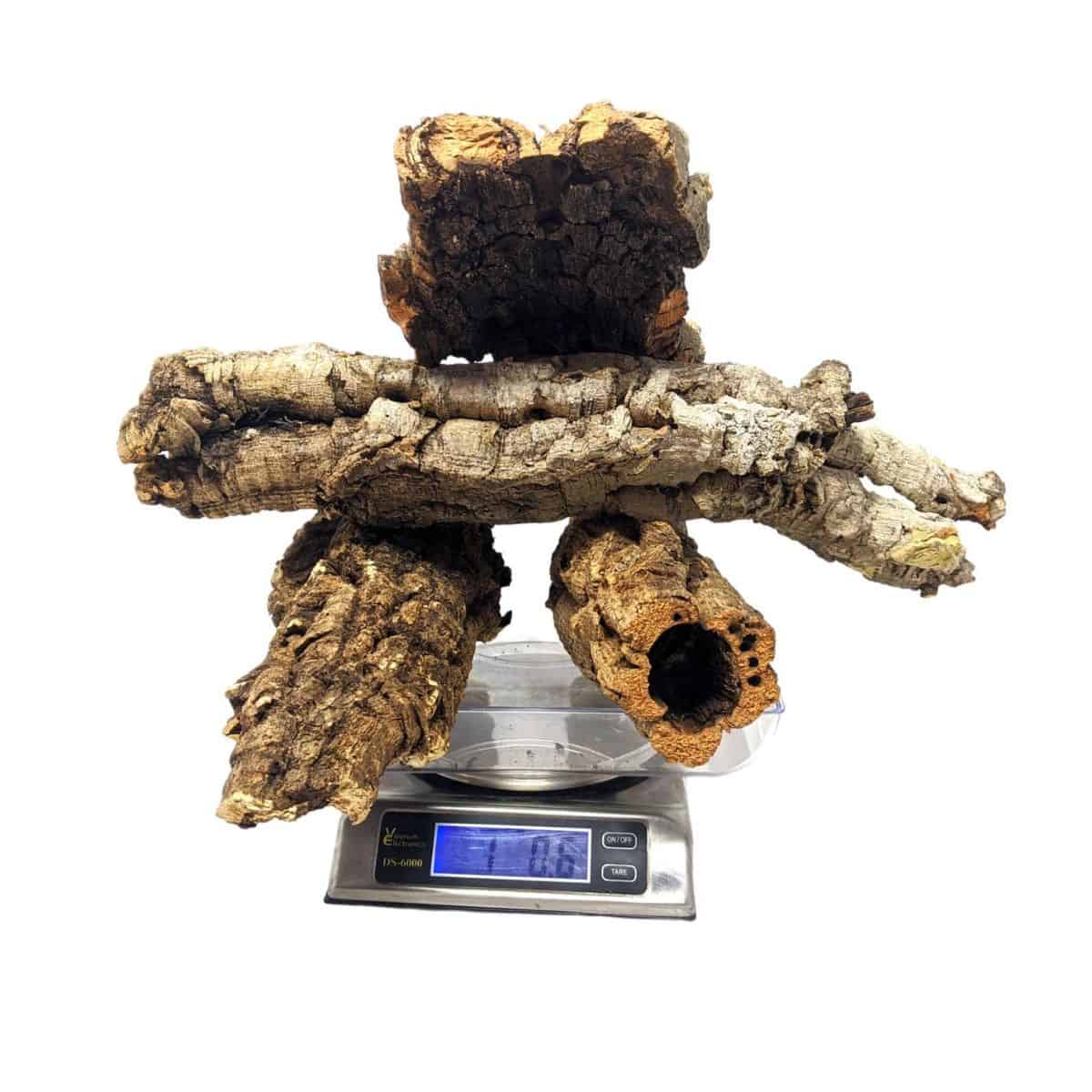
Let’s Put a Cork in It!
Here, our cork bark spotlight comes to an end.
Hopefully, I’ve managed to convince you of the many virtues of this wonderful material! For many terrarium use cases, cork bark really is the best fit.
Though, if you do need some further inspiration, check out my guide to other terrarium wood types.

Should the cork bark be pre-soaked for a certain amount of time before putting it in the tank? Or is putting it in dry and trying to spray it by hand enough to get climbers to root into it…? Thanks!
Hi Kate, I’d put it in dry for sure. The high humidity of the closed system is often enough on its own to get epiphytes to root up, but if you find it’s not, just give it a spray or two.